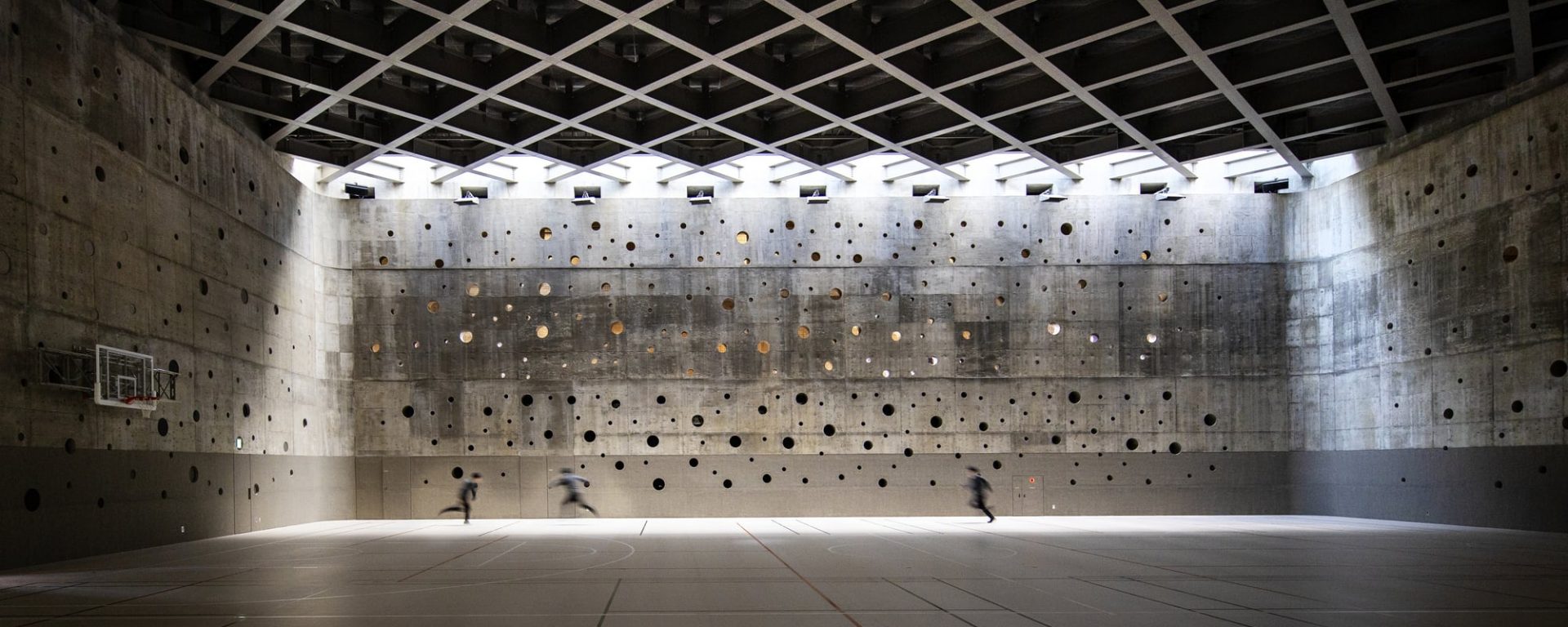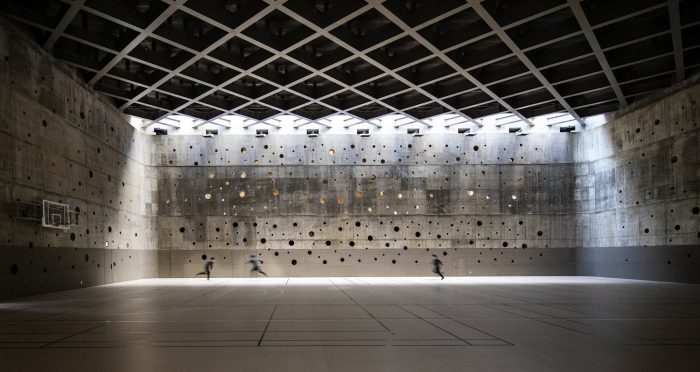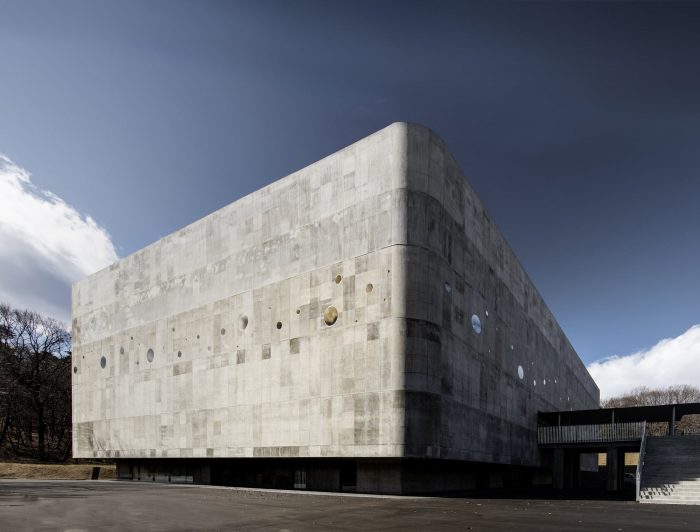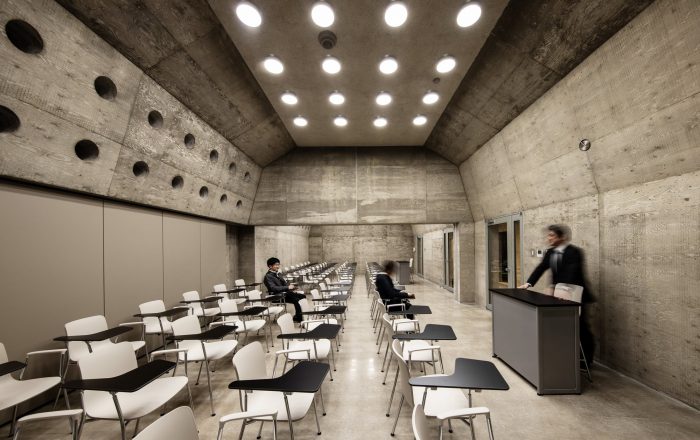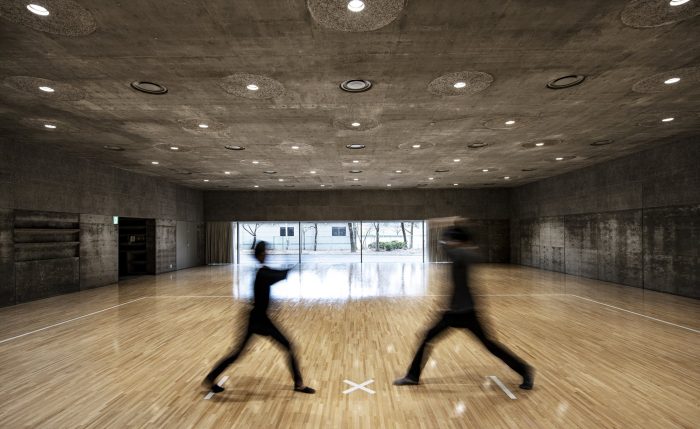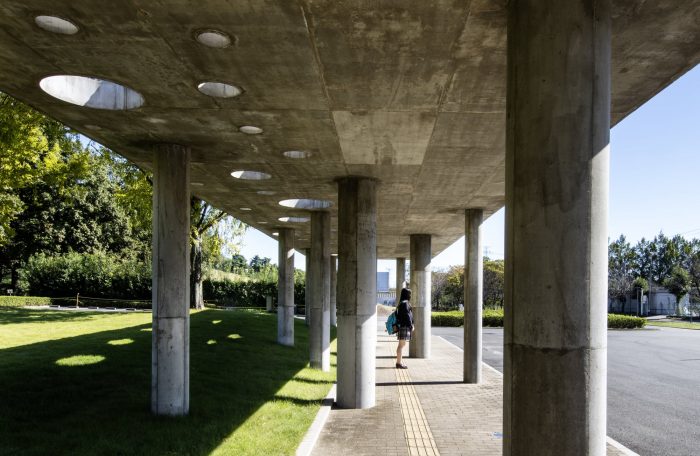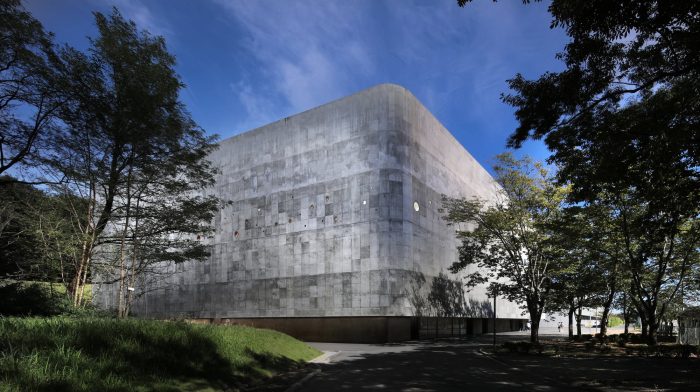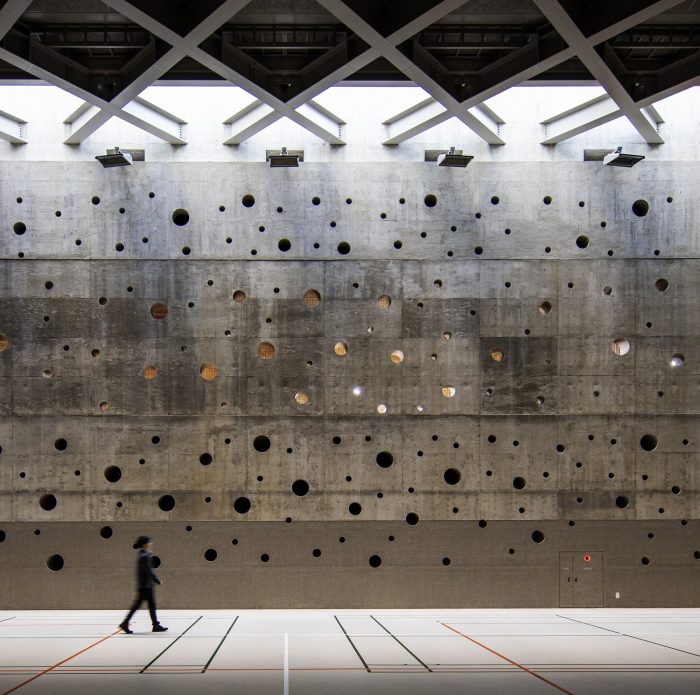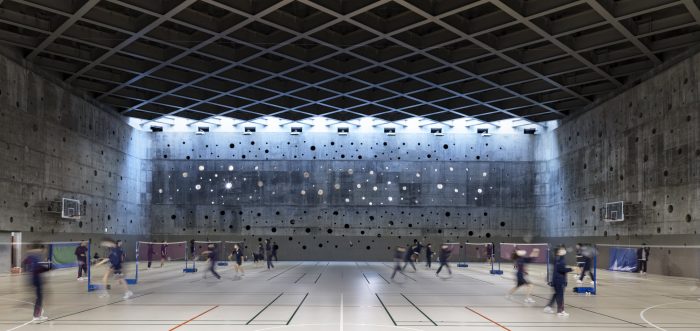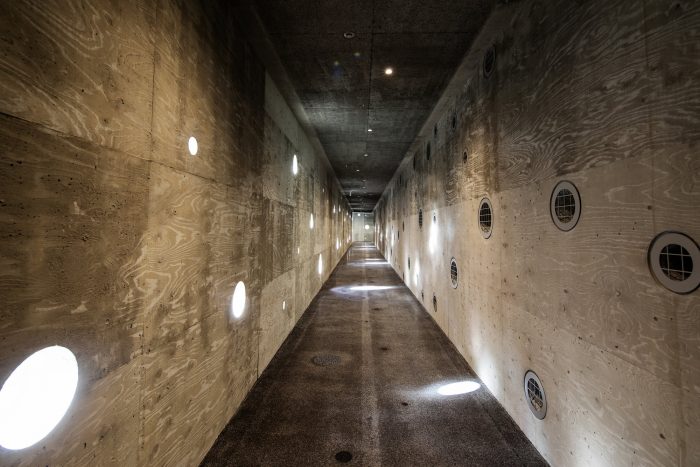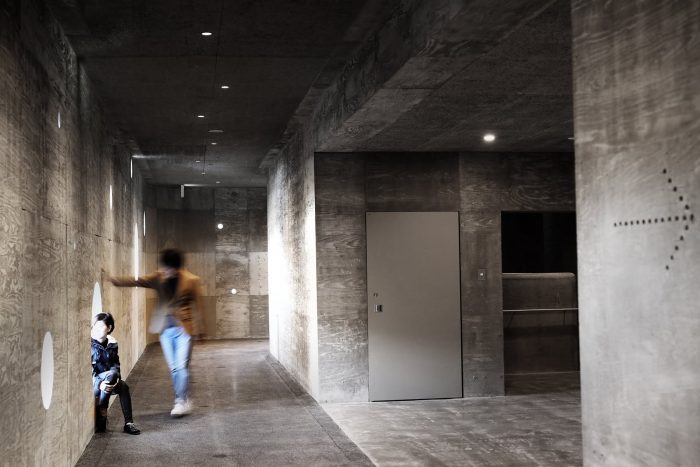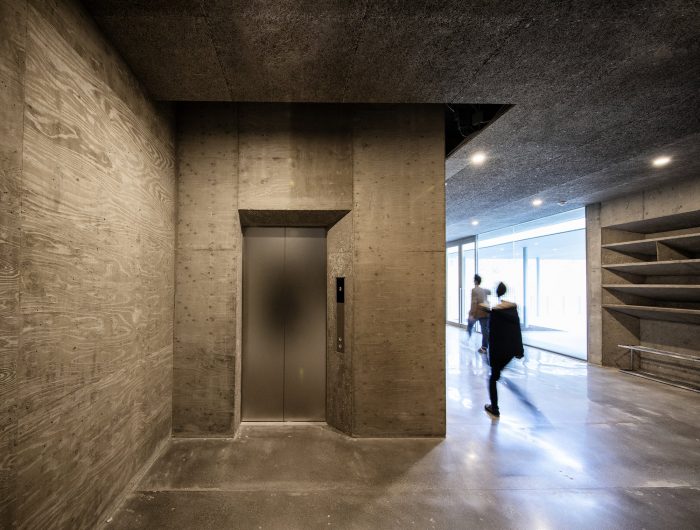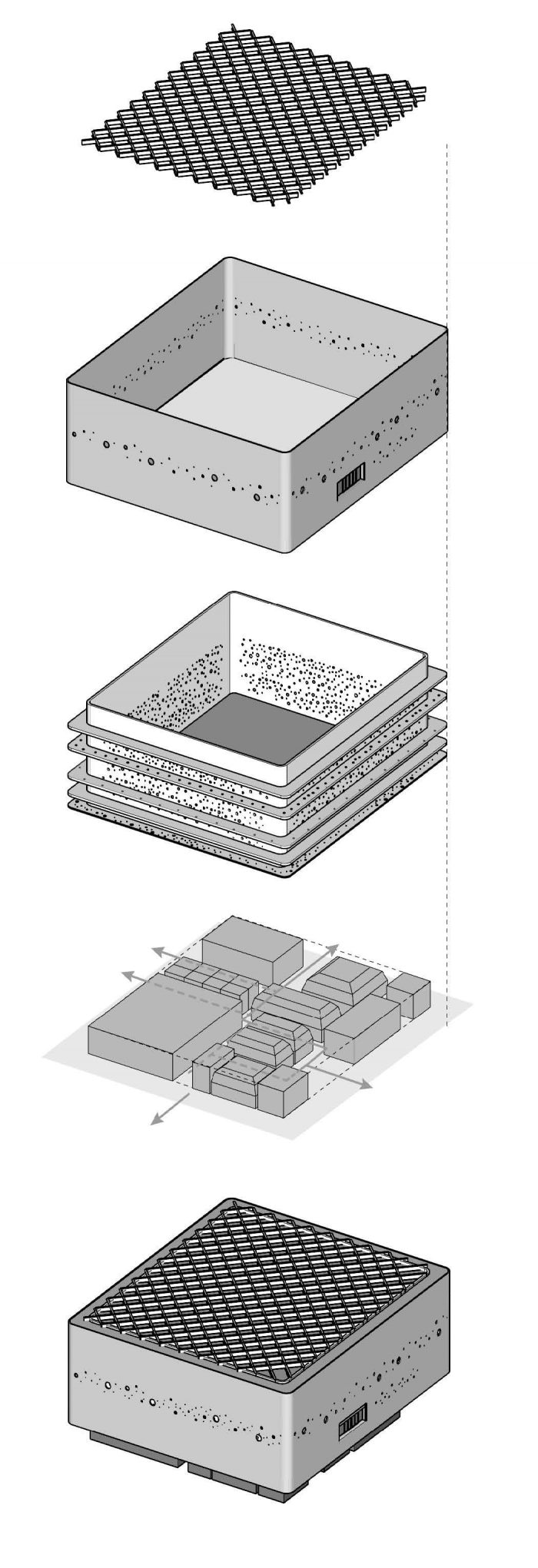由于这是一所日本著名私立大学附属中学的体育馆,其设计理念来自于如何将其描绘成一个教育设施。一般来说,在举行比赛时,体育馆的窗户会用遮光窗帘覆盖。然而,在这个项目中,我们的目标是创造一个适合室内运动的间接自然光的体育馆,并阻挡强烈的直射阳光,以提供对外部环境的感觉。
As this is a gymnasium of a high school affiliated with a leading private university in Japan, its design concept flows from how it should be portrayed as an educational facility. Generally speaking, gym windows are covered with blackout curtains when competitions are held. With this project, however, the aim was to create a gym allowing indirect natural light suitable for indoor exercises and blocking strong direct sunlight to afford a feel for the outside environment.
为了实现这一目标,在场馆的周边设计了四个结构性的 “管子”。这些管子在设施的运行中发挥了重要作用,因为它们容纳了空调、照明和音响设备。通过墙壁上的舱口可以进入。最外侧的管子是最宽敞的,它的功能是走廊、室内跑道和间接光线通过的通道,以便进入场馆。
To achieve this goal, four structural “tubes” were designed around the perimeter of the arena. These tubes have an important role to play in the operation of the facility, as they house air conditioning, lighting, and sound equipment. Access is possible through hatches built into the walls. The outermost tube is the most spacious, and functions as a corridor, an indoor running track, and a passageway for indirect light to pass through to the arena.
由于在场馆墙壁上的战略位置钻了大大小小的孔,穿透场馆核心的自然日光是苍白而昏暗的,类似于午夜的太阳。这种取向使人们不再需要遮光窗帘。该设施的内部和外部都是用清水混凝土完成的。装饰物被保持在最低限度,以明确建筑的构成。结构布局类似于一个寺庙;空间配置的意图是创造一个用户可以学习事物 “本质 “的地方。
With small and large holes bored into the walls of the arena at strategic locations, natural daylight that penetrates the arena core is pale and dim, akin to the midnight sun. This orientation obviates the need for blackout curtains. The facility’s interior and exterior were both finished in fair-faced concrete. Ornamentation was kept to a minimum to clarify the composition of the building. The structural layout is akin to a temple; the intent of the spatial configuration was to create a place where users can learn the “essence” of things.
该建筑内外完全没有添加颜色或油漆;”原始 “的灰色混凝土是它唯一的标志。相反,说它没有传统意义上的 “感觉 “它的颜色可能更正确。相反,这个空间允许对光线、材料的敏感性,以及对更多自然本质的把握。这种对 “简单的美 “的追求是脱离了世俗的趋势的。
The building is completely devoid of added color or paint, both inside and out; “primitive” grey concrete is its only signature. Rather, it might be more correct to say that one does not “feel” its color in the traditional sense. Instead, the space allows a sensitivity for light, materials, and a grasp of more a natural essence. This pursuit of “simple beauty” is divorced from secular worldly trends.
体育馆被设计成每一天的延伸;随着学生们登上楼层,他们的体验逐渐变得不寻常。然而,设计的意图并不是让每天都 “颠倒 “成不寻常的,而是变成一种更普通的、”每天 “的体验。在设计这座体育馆时,我们的想法是,建筑表达可以是现代的,但也可以是 “通用 “的,即它可以属于任何时代。
The gymnasium is designed to be an extension of every day; as students ascend the floors, their experience becomes gradually more extraordinary. However, the design intent is not that every day is “inverted” into the extraordinary, but rather into a more common, “every day” experience. When designing this gymnasium, our thoughts were on the idea of architectural expression that can be modern, but also “universal” in the sense that it can belong to any era.
Architects: Nikken Sekkei
Area : 4466 m²
Year : 2020
Photographs :Gankosha, Harunori Noda
Client : Waseda University
Site Area : 63,000 m²
Total Foor Area : 4,466 m²
Maximum Height : 18.55 meters
Constructions : Toda Corporation
City : Honjo
Country : Japan

